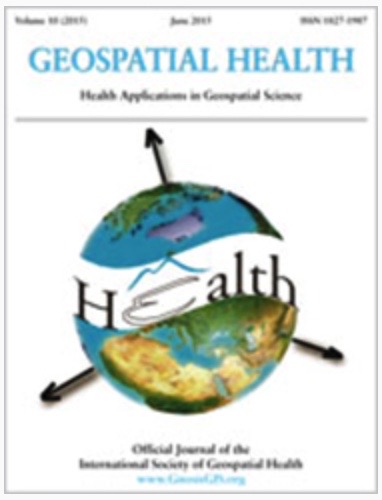Migration statistics relevant for malaria transmission in Senegal derived from mobile phone data and used in an agent-based migration model

Published: 31 March 2016
Abstract Views: 3282
PDF: 1189
HTML: 994
HTML: 994
Publisher's note
All claims expressed in this article are solely those of the authors and do not necessarily represent those of their affiliated organizations, or those of the publisher, the editors and the reviewers. Any product that may be evaluated in this article or claim that may be made by its manufacturer is not guaranteed or endorsed by the publisher.
All claims expressed in this article are solely those of the authors and do not necessarily represent those of their affiliated organizations, or those of the publisher, the editors and the reviewers. Any product that may be evaluated in this article or claim that may be made by its manufacturer is not guaranteed or endorsed by the publisher.
Similar Articles
- Ari Seifter, Alison Schwarzwalder, Kate Geis, John Aucott, The utility of Google Trends for epidemiological research: Lyme disease as an example , Geospatial Health: Vol. 4 No. 2 (2010)
- Halima B. Maïnassara, Nicolas Molinari, Christophe Dematteï, Pascale Fabbro-Peray, The relative risk of spatial cluster occurrence and spatiotemporal evolution of meningococcal disease in Niger, 2002-2008 , Geospatial Health: Vol. 5 No. 1 (2010)
- Cecilia Wolff, Mark Stevenson, Ulf Emanuelson, Agneta Egenvall, Ann Lindberg, Spatial patterns of recorded mastitis incidence and somatic cell counts in Swedish dairy cows: implications for surveillance , Geospatial Health: Vol. 6 No. 1 (2011)
- Samuel F. Atkinson, Sahotra Sarkar, Aldo Aviña, Jim A. Schuermann, Phillip Williamson, A determination of the spatial concordance between Lyme disease incidence and habitat probability of its primary vector Ixodes scapularis (black-legged tick) , Geospatial Health: Vol. 9 No. 1 (2014)
- Rebeca Ramis, Diana Gomez-Barroso, Gonzalo Lòpez-Abente, Cluster detection of diseases in heterogeneous populations: an alternative to scan methods , Geospatial Health: Vol. 8 No. 2 (2014)
- Nicolai Denzin, Joachim Borgwardt, Conrad Freuling, Thomas Müller, Spatio-temporal analysis of the progression of Aujeszky's disease virus infection in wild boar of Saxony-Anhalt, Germany , Geospatial Health: Vol. 8 No. 1 (2013)
- Samuel F. Atkinson, Sahotra Sarkar, Aldo Aviña, Jim A. Schuermann, Phillip Williamson, Modelling spatial concordance between Rocky Mountain spotted fever disease incidence and habitat probability of its vector Dermacentor variabilis (American dog tick) , Geospatial Health: Vol. 7 No. 1 (2012)
- John B. Malone, N. Robert Bergquist, Mapping and modelling neglected tropical diseases and poverty in Latin America and the Caribbean , Geospatial Health: Vol. 6 No. 3 (2012)
- Desmond H. Foley, Richard C. Wilkerson, L. Lynnette Dornak, David B. Pecor, Arpad S. Nyari, Leopoldo M. Rueda, Lewis S. Long, Jason H. Richardson, SandflyMap: leveraging spatial data on sand fly vector distribution for disease risk assessments , Geospatial Health: Vol. 6 No. 3 (2012)
- Josh Colston, The neglected tropical diseases (NTD) initiative for Latin America and the Caribbean of the Inter-American Development Bank and the role of geospatial analysis in health programmes , Geospatial Health: Vol. 6 No. 3 (2012)
You may also start an advanced similarity search for this article.











